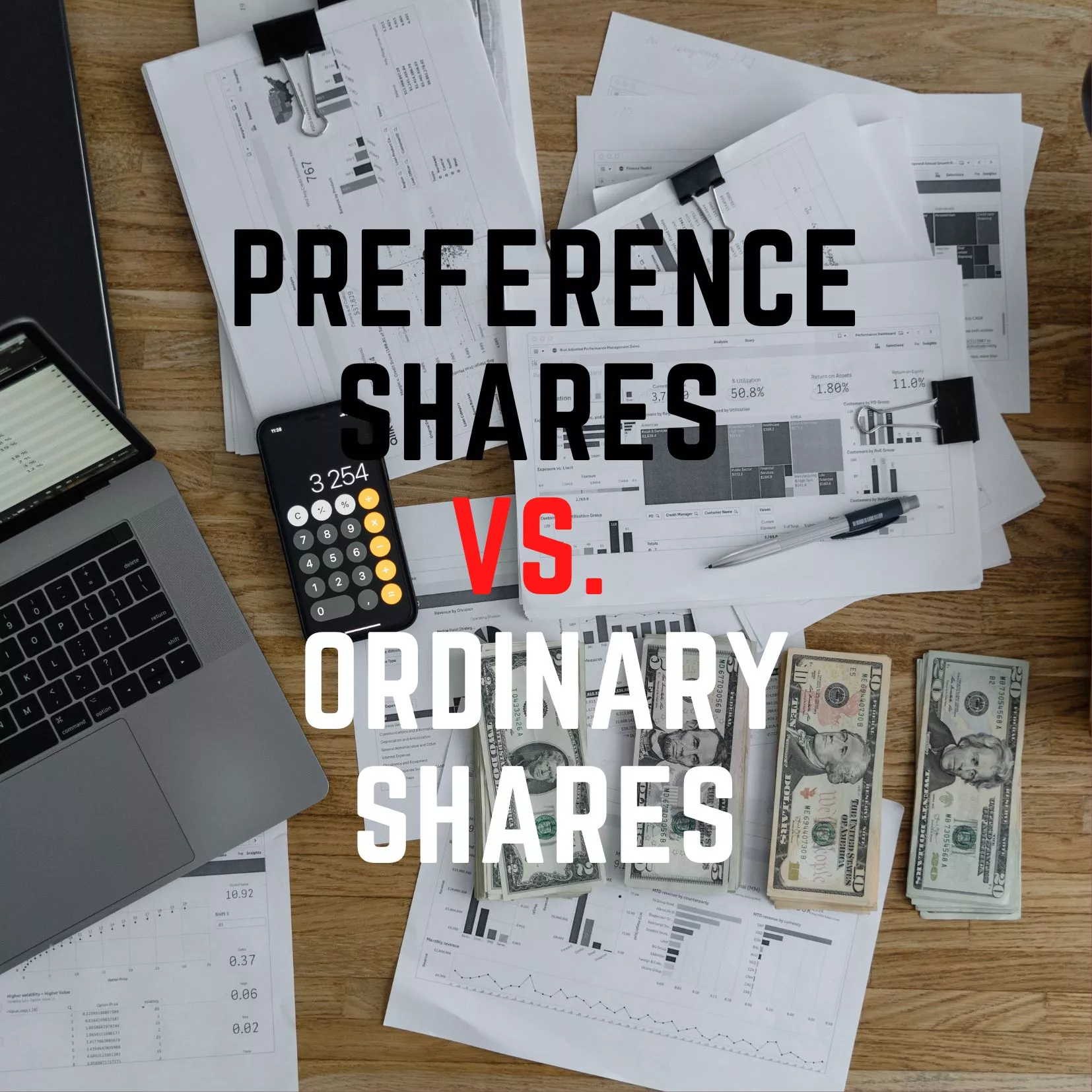Contents
- What is the difference between preference shares vs. ordinary shares?
- What is the stock or share definition?
- What are the different types of shares?
- Different types of shares Australia
- Preference share definition
- Ordinary share definition
- What are contributing shares?
- What are futures company issued?
- 5 main differences between preference shares and ordinary shares
- Preference shares vs ordinary shares
- Conclusion
- Sources
Preference shares vs. ordinary shares differ only in a few aspects, like voting rights, preference for dividends, and preference to pay while the company is liquidated. Preference shares can be issued to investors, while ordinary shares are only available to founders.
Stock is a percentage of ownership. Simply put, the number of shares in any stock equals to its value. Overall, stock and shares are very similar, with very little difference.
This was the definition of shares. We will be discussing Preference shares and ordinary shares in detail in later part of this page.
There are 3-4 types of shares that are common.
- Ordinary shares
- Preference shares
- Contributing shares
- Futures contracts issued by a company (in Some Countries)
All 4 types of shares, including the ones mentioned above, are very popular in Australia. People love to trade these shares every day of their lives. However, Preference shares are more common than ordinary shares.
These shares are more potent than ordinary shares because they are entitled to receive the Dividend before any other type of shares. This type of share doesn’t give shareholders voting rights. Another interesting aspect about preference shares is that they can be converted into any other type of share at any time.
These are the most popular and common types of shares. FPO stands for fully paid shares. Ordinary shares can also be called FPO. This type of share gives the shareholder full voting rights. These shares are also split into classes: Class A and Class B.
Two investors may take of shares 99% ordinary shares.
We will also be discussing the differences between preference shares and ordinary shares in detail in this post.
Partially paid shares have installments, also known as the payment of shares. Are these shares? They are paid at different times or on different dates. Like other shares, these shares can be purchased and sold on ASX or NYSE.
What are futures company issued?
This type of share, or authority or option granted by a company shareholders to purchase a certain amount of shares at a decided price before determining the due date. Futures trading is a popular way to make money. You can trade futures on popular platforms such as Quant fury Trading.
| Ordinary shares | Preference Shares |
|---|---|
| Dividends are paid last | Dividends are paid first |
| Have voting rights | No voting rights |
| They are issue to founders | They are issue to investors |
| Dividends are not Fixed | Fixed dividends |
| They have no priority in company liquidation and paid at last | They have priority in company liquidation and paid first |
Below are the critical differences between preference shares and ordinary shares
Preference shares holders get dividends before ordinary shareowners. This means that if both types of shareholders, such as preference and ordinary, meet and decide to distribute dividends, Preference shareholders will have priority.
Divide to Preference shareholders after distribution. Whatever money is left will be distributed to ordinary shareholders.
Ordinary shareholders have voting power. Ordinary shareholders can vote in any company meeting while voting for any decision.
Preference shareholders can’t vote. They have to accept the decision at the meeting.
Preference shareholders will receive priority, while ordinary shareholders will be paid first if a company is liquidated.
In other words, the investment risk of ordinary shareholders is higher than that of primary shareholders in the event of liquidation.
The amount of Dividend paid to Preference shareholders is set, and it is decided when shares will be issued. On the other hand,
The amount of Dividend that ordinary shareholders receive will change depending on the company’s growth, profit, and other factors. It could be higher or lower at times, depending on how much profit is being made.
These points compare preference shares to ordinary shares.
- Cumulative preference shares
- Noncumulative preference share
- Participatory preference shares
- Convertible preference shares
Conclusion
There are many differences between preference shares and ordinary shares, but the most common are voting rights, dividend priority, liquidation priority, and dividend amount.
Preference shareholders do not have the right to vote, but ordinary shareholders can vote. They must accept the ordinary shareholder’s decision. There are a few differences between ordinary and preference shareholders, a similar distribution of dividends in terms of priority and amount of Dividend.

